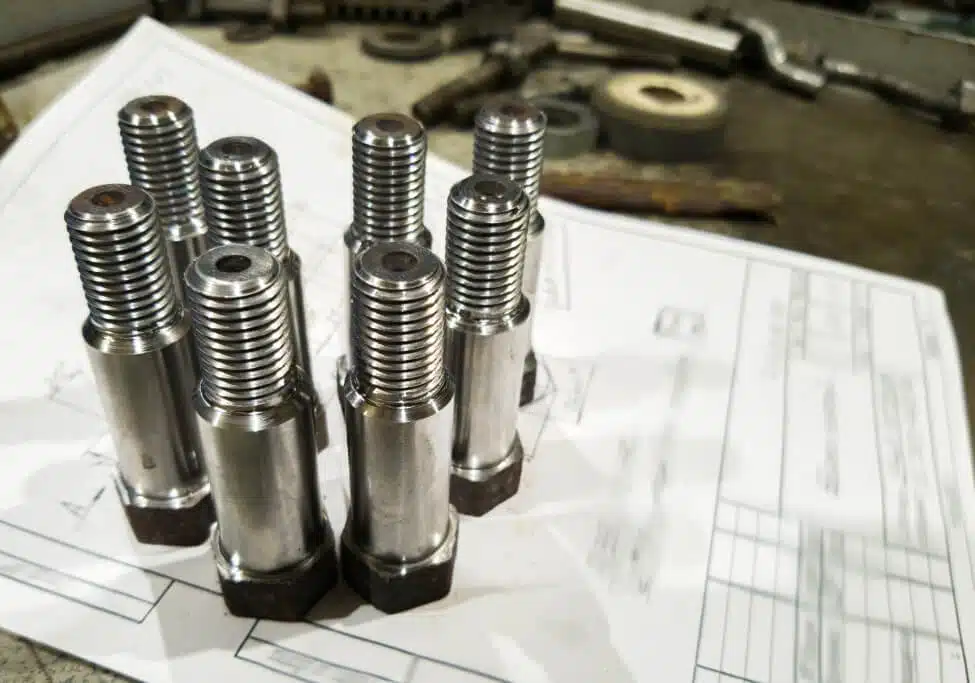AMSL CNC Turning Parts
✅ Get a quote within 24 hours
✅ Get quality-turned parts for rapid prototyping in 24 hours
✅ Follow ISO and industry standards

Understanding CNC Turning Parts
CNC turning is a machining process that removes materials from cylindrical parts by rotating the workpiece. It provides high-precision and symmetrical results. Similar to CNC lathe, both use CNC systems for processing.
CNC turning vs lathe machining | definition and variation
Lathe machining is the process of using a lathe to machining workpiece which is fixed on the spindle and then rotate it with the cutting tool to shape the parts to specifications and surface.
while CNC turning is a basic method of lathe machining process. Therefore, they are not exactly the same although there is some connections. Lathe machining usually includes turning, drilling, tapping, inserting and other processes.
CNC turning is the process of placing a workpiece on a lathe by rotating it and then using a cutting tool to remove material to get the final shape and size. During the turning process, the cutting tool moves linearly.

Our Expertise
Discover Our Capabilities- CNC Turned Parts
AMSL provides a variety of CNC lathing services to meet customer requirements. Our state-of-the-art equipment and highly skilled technicians enable us to produce high-quality parts with exceptional precision. We can fabricate parts of various sizes, shapes.
Material we work with
✔Aluminum
✔Brass /copper
✔Stainless steel
✔Plastics
✔Carbon steel
50%
Precision Machining Services
50%
Custom Fabrication Solutions
Surface finish options for CNC turned parts
✅Anodizing ✅Powder coating ✅Plating ✅Polishing ✅Painting

Aluminum Parts with anodized finish
creates a protective oxide layer on CNC machined aluminum parts for increased durability and aesthetics. It helps the aluminum parts from corrosion.

steel turned part with threading
Stainless steel lathe parts with threading are commonly used in industries such as aerospace, automotive, medical devices, and precision engineering.

brone / brass turned part
Brass-turned parts, known for their precision and mechanical properties, are widely used in aerospace, automotive, electronics, marine, and plumbing industries.
Types of Common Material for CNC Turning Parts
Here’s a summary of the types of materials commonly used for CNC-turned parts:
Metal
Aluminum: Lightweight, corrosion-resistant, and easy to machine.
Steel: This includes stainless steel and carbon steel. They are durable, corrosion-resistant, high-strength, and cost-effective.
Brass and Copper: Excellent machinability, corrosion resistance, excellent conductivity performance, and aesthetic appeal.
Plastics
Nylon: Durable, wear-resistant, and lightweight.
Delrin (POM): High stiffness, low friction, and excellent machinability.
Acrylic (PMMA): Transparent Often used for optical and decorative parts.
PVC: Cost-effective and chemical-resistant.
PEEK: High strength, heat resistance, and chemical resistance.
Others
such as alloys, woods, and ceramics, etc.
Frequently Asked Questions
What is difference between cnc milling and cnc turning?
✅Operation:
The workpiece on CNC mill remains stationary while the cutting tool rotates and moves along multiple axes to shape the features. But in CNC turning centers the workpiece rotates while the cutting tool moves linearly to remove material.
✅Part geometry: CNC milling is ideal for producing parts with intricate shapes, slots, holes and 3-dimensional features. While CNC turning is mainly produce cylindrical parts like shafts, pins and cones
✅Cutting tool:CNC milling uses rotating cutting tools such as end mills, face mills, and drills. While CNC turning, use a stationary cutting tool, like single-point cutting tools and drills.
Are there any limitations on CNC turned components?
Yes, they have size limitations on the maximum diameter and length. It depends on the CNC lathe machine’s capacity.
What tolerance can CNC turning achieve?
CNC turning can achieve high precision, with tight tolerances typically ranging from +/-0.001 to 0.005 inches.
How long I can get my turned parts?
Typically, for the standard project with simple geometries and tolerances, you can expect to receive your turned parts within 2-3 days to a couple of weeks.
But there are several factors that affect the lead time for receiving your CNC turned-parts:
✅The complexity of the machine parts
✅The raw material for metal parts
✅The machine shop capacity
✅The tolerance and size for the machined parts.
